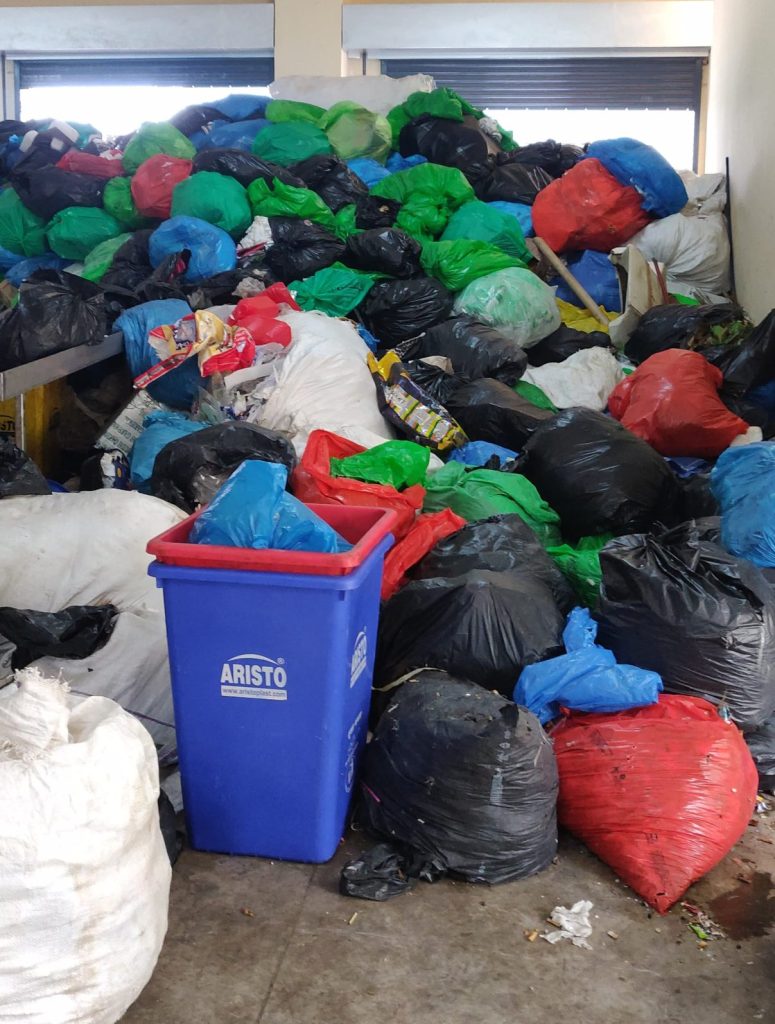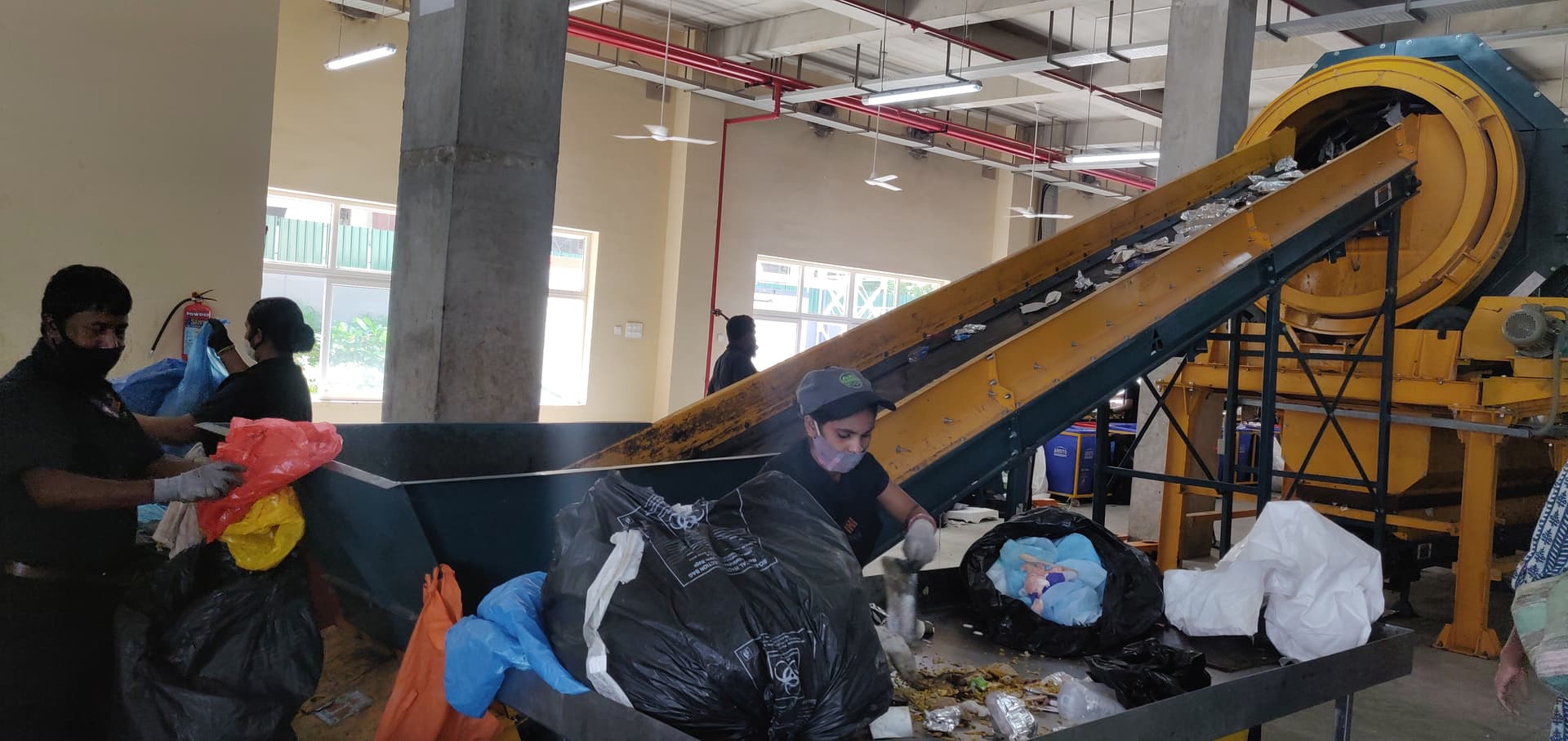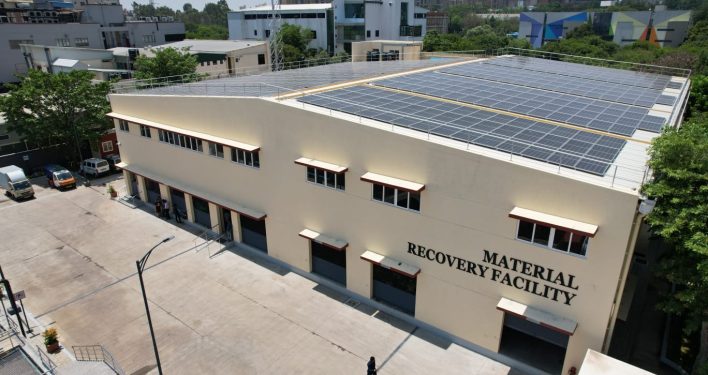Waste is not easy
Waste is not an easy subject to deal with. It’s hardly pleasant either. We know. We agree.
Conversations ranging from the lack of infrastructure and the subsequent mismanagement of waste to upcoming innovative circular solutions and everything in between; and of course its impacts and intersections with the larger climate puzzle have increasingly been a focus at the Rainmatter Foundation. Yet, the more we reach out, the deeper we delve into these questions – from a sustainability, climate, rights, innovation, systems perspective – we’re both shocked and humbled by the magnitude of the problem, and the resilience of individuals and organisations working tirelessly to handle it.
An early morning auto ride takes me to Electronic City. This is unlike the landscape I’m used to in Bangalore; it’s an alternate cityscape. It’s instantly modern, sorted – a landscape with towering industries, and lives built around it. A lot of it is credited to the management by ELCITA. The Electronics City Industrial Township Authority (ELCITA) is Karnataka’s pioneering industrial township authority. Within its scope lies everything from overseeing the infrastructure demands of E-City to envisioning it as a futuristic city. I’m visiting ELCITA’s Material Recovery Facility with our partners, Saahas.
Set up in a 1.5 acre plot, the centre is managed by NEPRA, a waste management company based in Gujarat, and has been operational since January 2023. The expansion to add two more waste management centres is underway. Everyday, a whopping ~16 tonnes of waste from about 149 industries of the close to 200 in Electronic City comes to this centre. Of this, about six tonnes is food waste which is sent to the biogas plant (it really is six tonnes, we confirmed thrice). The dry waste mainly comprises packaging material, multi-layered plastic, food delivery boxes, tissues, etc.
The building is built as per the IGBC guidelines (a rating system developed to encourage designers to adopt concepts and principles to reduce the environmental impact of constructing new buildings) and runs on solar energy. The two existing centres currently employ about 70 people.

Stock of waste collected at ELCITA over two days
Waste is a long and winding road
Of the total waste collected ~70% is dry waste and ~30% wet. While ~70% comes in segregated, ~30% is mixed and needs to be sorted at the centre. After the waste is collected from the companies, it goes through a round of pre-segregation before going into the “trommel” – a large rotating drum that separates waste according to its density and size. The waste going into the trommel needs to be cleaned though, or it will mess up its functioning.

The trommel
Here comes the troubling part –
Before the waste is sent into the trommel, the women employed at the facility have to sort through and clean it by hand. Containers in which food is already starting to rot, biodegradable waste mixed with the rest, dirty packages – all because these weren’t rinsed or segregated before being thrown out. I remember once reading, ‘There is no “away”. Everything thrown ‘away’ goes somewhere’. Would we continue handling waste the same way if we knew its full implications? The truth is, the choices we make with our waste – what we buy, if we segregate, how we discard – has consequences beyond what we imagine. Yes, our systems are hardly perfect, but is there scope to do better in what is offered to us? This video that recently went viral brings to light the plight of waste pickers across Indian cities.

The manual pre-segregation process
Once out of the trommel, the waste is manually segregated into 38 categories on the belt. From whatever is left behind as ‘reject waste’, the employees comb through to find recyclable bits. Whatever is left then is, well, reject. But thanks to the thorough efforts by the employees, as little as 10% goes to the landfills as reject waste, while the remaining 90% is sent to the appropriate recycling centres. The multi-layer plastics go to cement factories, plastic bottles go to PET plants where these get made into buttons, thermocol packaging is melted to make pellets.
The cleaned, segregated waste goes into the baling machine category-wise and comes out as a tightly packed bales before it’s sent out. At the next recycling facility, a lot of these containers need to be washed again, making the recycling process resource intensive.
In the same premises is also a Sewage Treatment Plant which treats waste water from the residential areas around and then sells the recycled water to industries for gardening, etc. The sludge is sent for composting.

Bales of single-use plastic containers
No effort goes waste
The day before we visited the plant, ELCITA had won the Most Innovative Environmental Project award from the Confederation Of Indian Industry (CII). It has also found a way to bring in tech solutions to understand and handle waste better and to get accurate records and stats for all activities; like tracking waste collection vehicles for example, or figuring the waste patterns of different industries or understanding what forms major chunks of the waste, etc.
Despite ELCITA’s mammoth efforts, a number of issues remain to be addressed. While significant steps are taken in the direction of managing the waste produced, how can the patterns in larger industries be influenced to bring down the stock of waste generated. Daunting as it may seem, industries have managed to reduce their waste footprint with the right effort, intention and support. We’ve shared a few guidelines to get started here.
Organisations and large corporations, as industry and society leaders, have tremendous power to change the existing narratives and become responsible brands that invest in the future of people and the planet. With support from institutions like ELCITA and waste management partners like Saahas, Skrap, SWMRT, Hasirudala, Waste Warriors, etc., there is scope for meaningful, sustainable change, provided industries are willing to engage in the process and move ahead with trust and patience, and a little reimagination. This is our chance to rewrite what ‘business-as-usual’ may mean.


Another one of the First nd highly efficient, effective process.
Congrats to the Team.
Let’s be an Example, Always